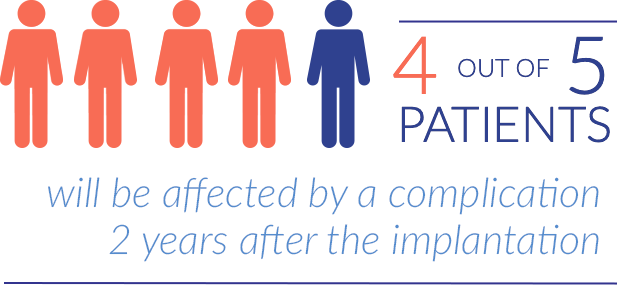What is an LVAD?
A True Backup For The Heart
 A Left Ventricular Assist Device (LVAD) is an implantable pump attached to the heart, connecting the apex of the left ventricle to the ascending aorta.
A Left Ventricular Assist Device (LVAD) is an implantable pump attached to the heart, connecting the apex of the left ventricle to the ascending aorta.
LVADs are intended to treat patients suffering from advanced heart failure. They assist or take over the function of pumping the blood for the heart which has become too weak to effectively pump blood. LVADs restore a sufficient amount of blood flow to suppress heart failure symptoms in these critically ill patients.
LVADs are implanted surgically, under general anesthesia, by an opening in the chest. Once implanted, the power supply and controls for the device are provided via an external cable passing through the patient’s abdomen, connecting the pump to a controller and batteries.
An Established Therapy
 LVADs have been implanted for thirty years as a bridge to transplant (BTT), allowing sick patients to regain a better quality of life while waiting for a possible heart transplant. However, there are too few donor hearts, and not all patients are qualified for or would benefit from a transplant. LVADs, which now offer survival rates equivalent to cardiac transplantation, are now implanted in a definitive therapy approach (Destination Therapy or DT) and represent an alternative to heart transplantation and a solution to graft shortage.
LVADs have been implanted for thirty years as a bridge to transplant (BTT), allowing sick patients to regain a better quality of life while waiting for a possible heart transplant. However, there are too few donor hearts, and not all patients are qualified for or would benefit from a transplant. LVADs, which now offer survival rates equivalent to cardiac transplantation, are now implanted in a definitive therapy approach (Destination Therapy or DT) and represent an alternative to heart transplantation and a solution to graft shortage.
DT has experienced significant growth: in less than a decade it has become dominant in the US and Germany, Europe’s leading LVAD country. With about 8,000 procedures per year, LVADs represent an established therapy but these devices are underutilized as each year 100,000 patients in the US and Europe could be eligible for that procedure.
And Yet, A High Rate Of Associated Complications
 The large number of DT implants continues to grow despite the high rate of associated complications: in the two years following implantation, 80% of patients will develop a severe complication requiring rehospitalization. These complications include bleeding, mainly gastrointestinal bleeding, or even stroke, which sometimes prove fatal.
The large number of DT implants continues to grow despite the high rate of associated complications: in the two years following implantation, 80% of patients will develop a severe complication requiring rehospitalization. These complications include bleeding, mainly gastrointestinal bleeding, or even stroke, which sometimes prove fatal.
Current LVADs use rotational impeller technology; this technology does not reproduce pulsatility of the native heart, which is now considered to be the main cause of LVAD-related complications.
A Device Dedicated To Left Heart Failure
LVADs differ from total artificial hearts (TAHs) in their indication, target patients and implantation procedure. Contrary to TAHs, the goal of an LVAD is to assist the heart rather than replace it.
TAHs are a medical device implanted in patients suffering from biventricular heart failure, or dysfunction of both right and left ventricles. This pathology accounts for only 5% to 30% of patients suffering from heart failure, the rest being left heart failure. The population eligible for the implantation of such devices is reduced; there are currently fewer than 200 implantations per year. This treatment of last resort for the sickest patients is an old concept, known and used since 1982. Unlike the implantation procedure of a LVAD for which the native heart is preserved, the implantation of a total artificial heart requires the explantation of both ventricles.